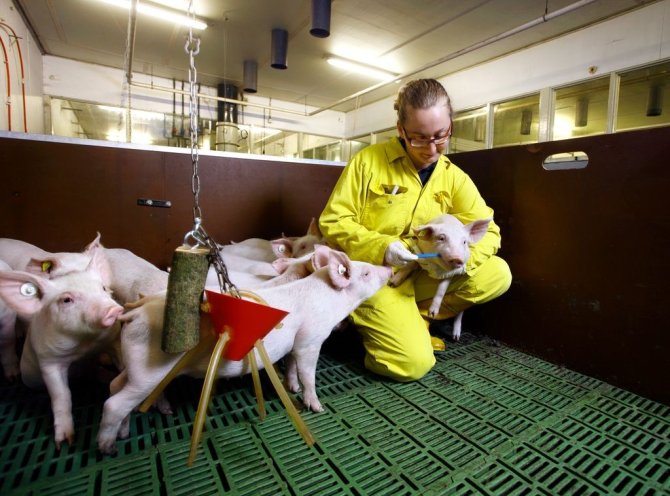
Use case
Prediction models to identify piglets that require adapted management
Utilizing big data to predict pneumonia, low growth rate and low meat percentage in pigs raised for food.
Machine learning as a management tool
In pig meat production, efficiency benefits from uniform growth in pens, resulting in single deliveries from a pen of possibly all animals in the right weight range. Abnormalities (like pneumonia and growth deviations) reduce production efficiency due to a reduction in uniformity and may even cause multiple deliveries per round and pigs delivered with a low meat yield or outside the desired weight range. Identifying aberrant piglets at the start of the growing-finishing phase could allow farmers to improve efficiency by grouping piglets that require adapted management.
Farmers are increasingly using data to optimise their management. The volume of available data is growing quickly and originating from multiple sources, turning it into big data. The data, however, is often incomplete, especially at the individual animal level. Machine learning techniques can help to develop new prediction models based on large volumes of imbalanced and incomplete data.
Our approach: using a gradient boosting machine to predict aberrant piglets
If aberrant piglets can be identified at the start of the growing-finishing phase, farmers can manage these higher-risk animals differently than other groups and, by doing so, increase production efficiency. Wageningen Livestock Research analysed existing data from the Swine Innovation Centre (VIC) Sterksel using a gradient boosting machine (GBM). The GBM offers insights into important parameters that contribute to identifying aberrant piglets.
We analysed data from just over 65 thousand pigs born between 2004 and 2016. This included data on offspring, litter, transfer dates between and locations during the production stages, and individual live weights at several production stages. This data was used to predict three traits at the start of the growing-finishing phase: 1) pneumonia (yes/no), 2) growth rate (belonging to the lowest 10%) and 3) meat percentage (belonging to the lowest 10%).
This approach is unique because it only requires readily available data; no new investments are needed, only a commitment to using existing data in an innovative way.
(Expected) impact of the approach
The GBM could not make reasonable predictions of piglets belonging to the lowest 10% meat percentage. For pneumonia, the prediction performance was moderate, whereas for growth rate, the GBM achieved a threefold increase in positive predictive value. This means that the GBM can identify pigs with aberrant growth at the start of the growing-finishing phase, just by using routine data. Although not perfect, this result can be considered the first step towards an early warning system for abnormalities or aberrant piglets, and allows farmers to adjust their management in an early stage of the growing-finishing phase.

Tools used
- Gradient Boosting Machine, GBM within H2O-package in RStudio
In cooperation with
- Swine Innovation Centre (VIC) Sterksel